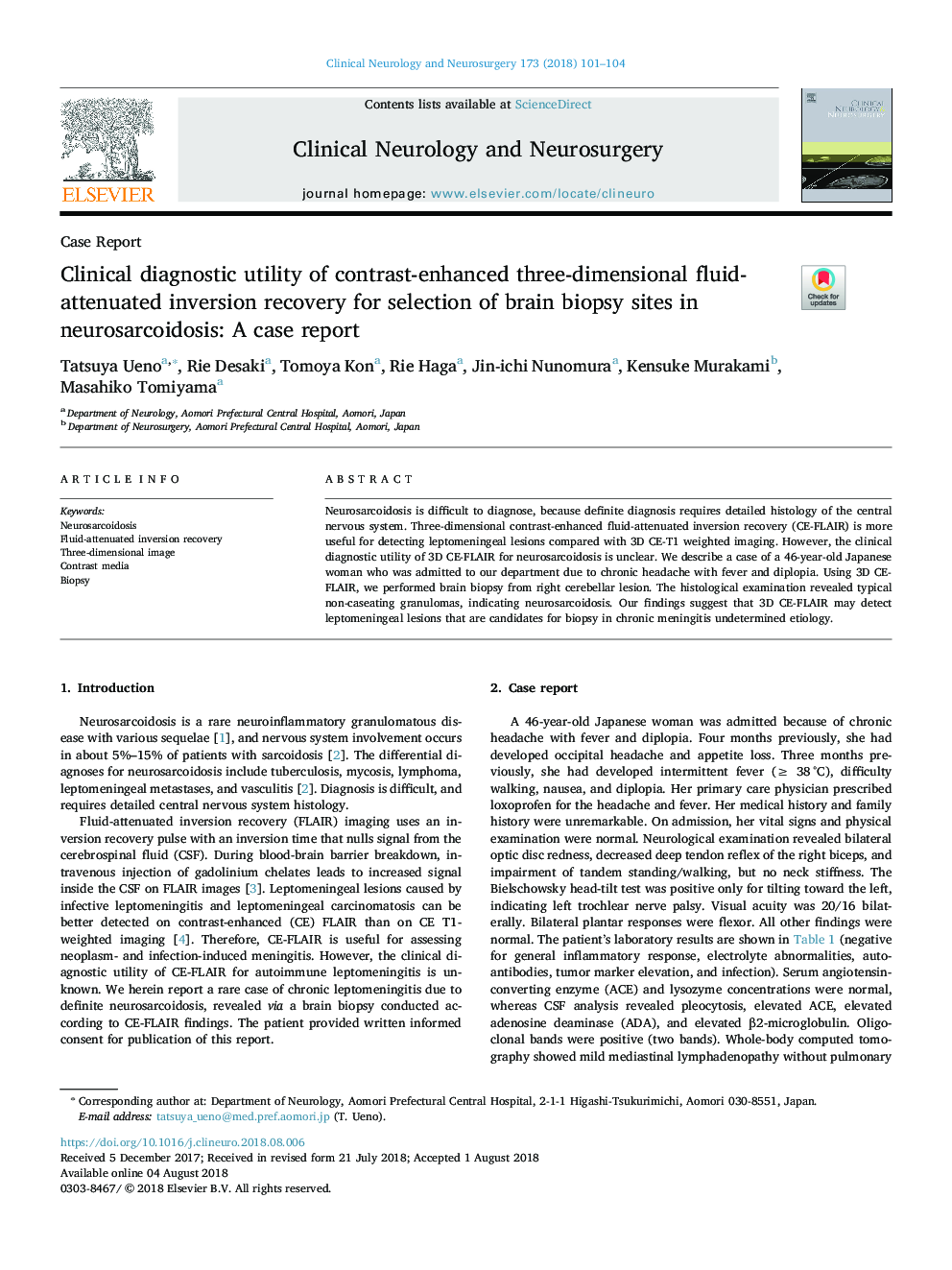| Article ID | Journal | Published Year | Pages | File Type |
|---|---|---|---|---|
| 8681636 | Clinical Neurology and Neurosurgery | 2018 | 4 Pages |
Abstract
Neurosarcoidosis is difficult to diagnose, because definite diagnosis requires detailed histology of the central nervous system. Three-dimensional contrast-enhanced fluid-attenuated inversion recovery (CE-FLAIR) is more useful for detecting leptomeningeal lesions compared with 3D CE-T1 weighted imaging. However, the clinical diagnostic utility of 3D CE-FLAIR for neurosarcoidosis is unclear. We describe a case of a 46-year-old Japanese woman who was admitted to our department due to chronic headache with fever and diplopia. Using 3D CE-FLAIR, we performed brain biopsy from right cerebellar lesion. The histological examination revealed typical non-caseating granulomas, indicating neurosarcoidosis. Our findings suggest that 3D CE-FLAIR may detect leptomeningeal lesions that are candidates for biopsy in chronic meningitis undetermined etiology.
Keywords
Related Topics
Life Sciences
Neuroscience
Neurology
Authors
Tatsuya Ueno, Rie Desaki, Tomoya Kon, Rie Haga, Jin-ichi Nunomura, Kensuke Murakami, Masahiko Tomiyama,
